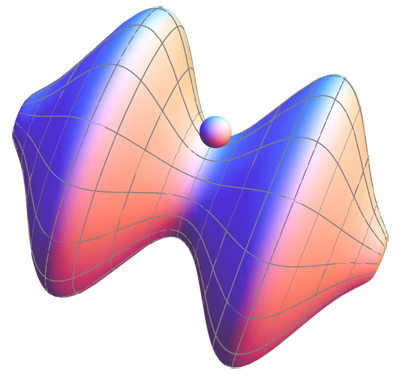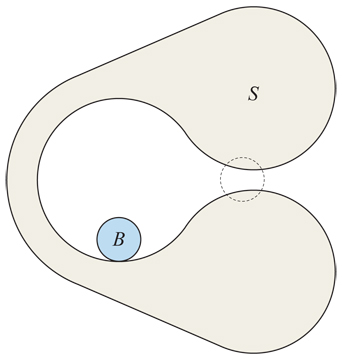Let $S$ be a smooth solid body in $\mathbb{R}^3$,
and $B$ a ball of radius $r$.
Say that $B$ is in contact with $S$ if
(1) they share a point $x$
that is on the surface of each,
$x \in \partial S$ and $x \in \partial B$,
and (2) neither penetrates the other,
$\operatorname{int} S \cap \operatorname{int} B = \varnothing$.
Say that $S$ can be rolled by $B$ if,
for every pair of points $x,y$ on the surface of $S$, there
is a path $\rho$ connecting $x$ to $y$ on $\partial S$
such that $B$ can be placed in contact at every point $z \in \rho$.
In other words, the ball $B$ can roll between any pair of points of
the surface without ever penetrating $S$.

My question is:
Characterize the bodies $S$ that can be rolled by a ball of radius $r$.
A necessary condition is that the Gaussian curvature at any point on the surface of $S$ must be $\ge -\frac{1}{r^2}$. Could that also be sufficient, or are there global obstructions such that $B$ could be in local contact but penetrate away from the contact point? Is the characterization different for surfaces of genus zero than for surfaces with handles? Any insights, speculations, or literature pointers would be appreciated. Thanks!
Update. Here is my interpretation of Anton's example:

